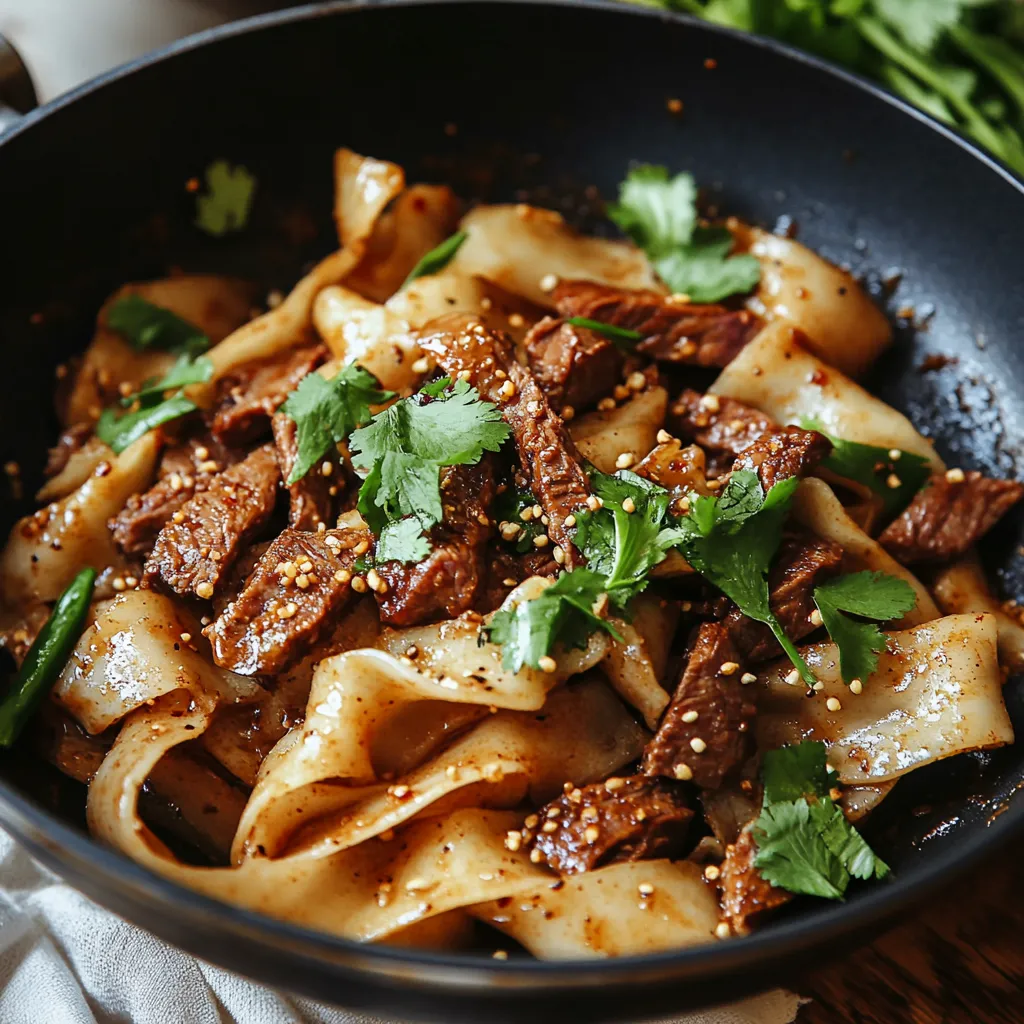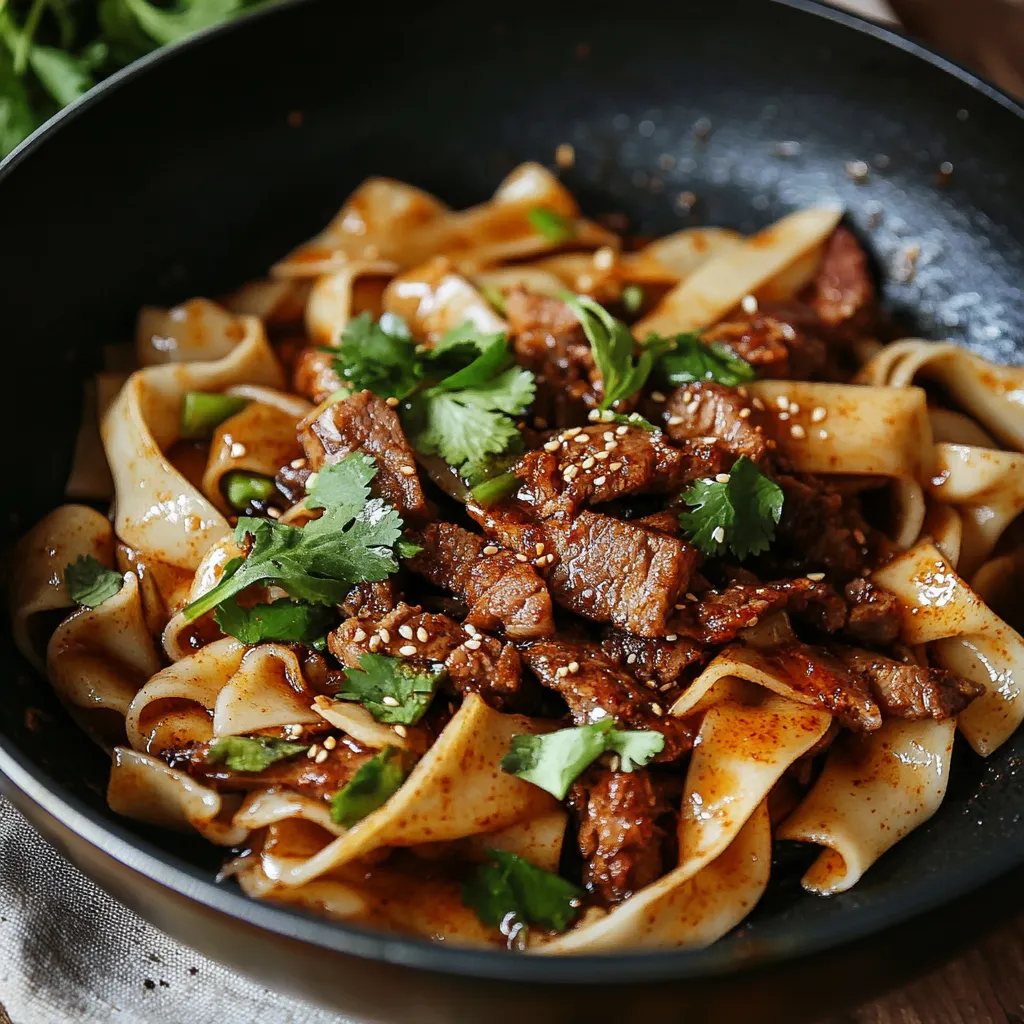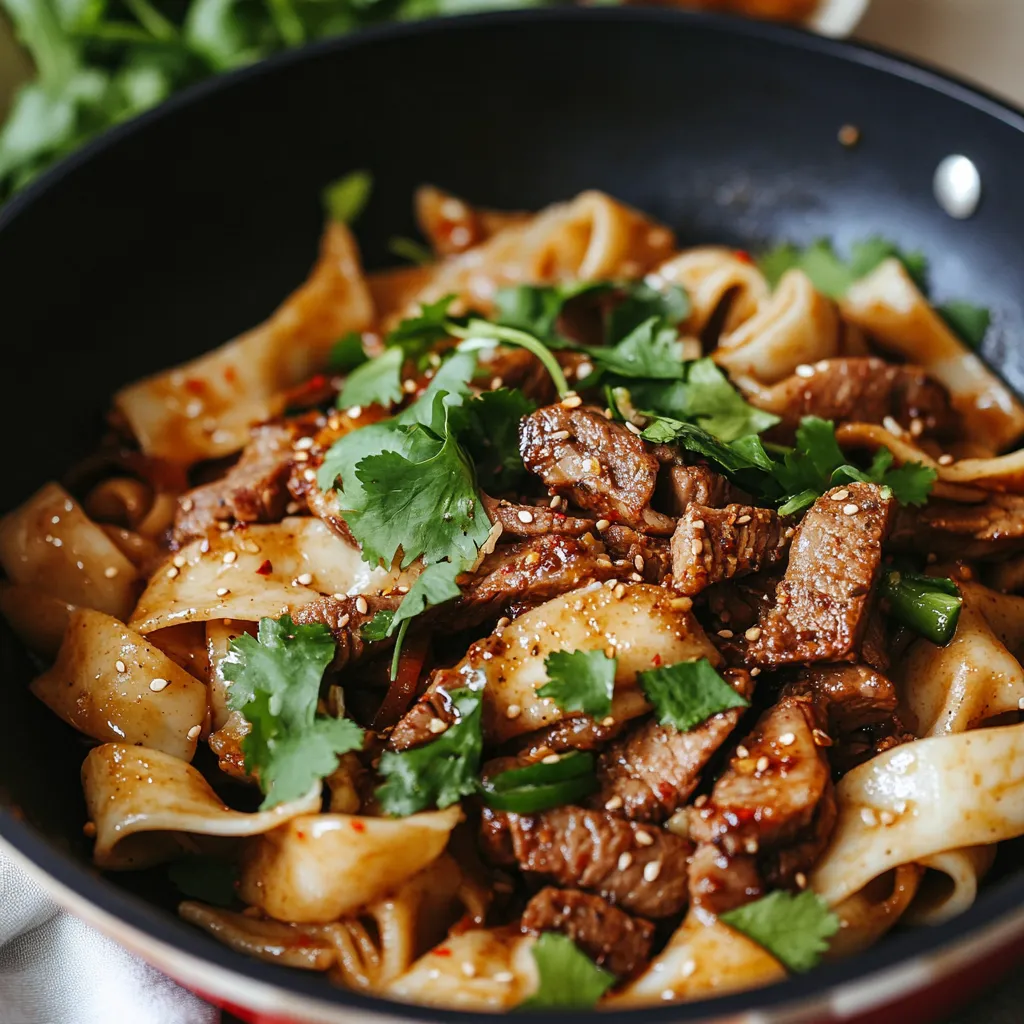 Pin it
Pin it
This hearty and aromatic cumin lamb noodle dish combines tender meat and chewy noodles in a bold, spice-infused sauce that will transport you straight to the streets of Northwestern China. The fragrant cumin pairs perfectly with the richness of lamb in this restaurant-quality meal you can create at home.
I first encountered this dish at a tiny Xi'an restaurant in New York and became obsessed with recreating it at home. After many attempts, this version has become my family's favorite Friday night tradition, with everyone gathering around the table fighting over the last bits of sauce.
Ingredients
- Lamb: Thinly sliced against the grain ensures tenderness and quick cooking time. Look for well-marbled cuts like loin or shoulder for the best flavor
- Cumin seeds: Provide the signature earthy flavor that defines this dish. Toast them fresh for maximum aroma
- Sichuan peppercorns: Deliver the distinctive numbing sensation that makes this dish authentic. Try to find high quality ones with vibrant color
- Homemade chili oil: Creates the foundational flavor. The depth cannot be matched by store bought options
- Shaoxing wine: Adds complexity and helps tenderize the meat. A good dry sherry works if you cannot find it
- Dark soy sauce: Gives beautiful color and caramelized notes. Do not substitute with regular soy sauce
- Hand-pulled noodles: Offer the ideal chewy texture to complement the lamb. Fresh wheat noodles make a good alternative
Step-by-Step Instructions
- Toast the Spices:
- Heat cumin seeds, Sichuan peppercorns, and coriander in a dry pan over medium-low heat for about 5 minutes until fragrant and popping. Stir frequently to prevent burning and ensure even toasting. This critical step releases essential oils that define the flavor profile of the dish.
- Marinate the Lamb:
- Mix sliced lamb with Shaoxing wine, salt, oil and 2 teaspoons of your freshly ground spices. Add cornstarch and mix thoroughly by hand until every slice is evenly coated. Allow to marinate for 15 minutes while preparing other ingredients. The cornstarch creates a protective coating that seals in juices during the high-heat cooking.
- Prepare the Sauce:
- Combine chili oil, Chinkiang vinegar, Shaoxing wine, light soy sauce and dark soy sauce in a bowl. This balanced mixture delivers layers of heat, acidity, umami and richness. The measurements create the perfect harmony, but you can adjust to your taste.
- Sear the Lamb:
- Heat oil in a large skillet until smoking. Spread marinated lamb in a single layer with minimal overlap. Add garlic and ginger on top and let sear undisturbed for 30-60 seconds until deeply browned on one side. This initial high-heat contact creates caramelization that forms the foundation of flavor.
- Complete the Stir Fry:
- Add red onion and green chilis, stirring quickly for 10-20 seconds. Sprinkle in remaining spice mix and toss everything to coat evenly. Pour in the prepared sauce, scraping any browned bits from the pan. These caramelized bits contain concentrated flavor compounds essential to the final taste.
- Finish with Fresh Elements:
- Turn off heat and add chopped cilantro, stirring to incorporate. Transfer everything to a serving plate immediately to prevent overcooking the lamb. The residual heat will continue cooking the meat slightly while the fresh cilantro brightens the rich flavors.
- Cook and Serve Noodles:
- Boil hand-pulled noodles for 1-2 minutes or packaged noodles according to instructions. Divide among four bowls and top each with the lamb mixture and sauce. The hot noodles will absorb some of the flavorful sauce while maintaining their chewy texture.
 Pin it
Pin it
My absolute favorite moment with this dish was watching my spice-adverse father-in-law take his first reluctant bite, only to immediately go back for seconds and thirds. The complex layering of flavors converts even the most hesitant eaters into devoted fans.
Storing and Reheating
Leftover cumin lamb stored in an airtight container will keep well in the refrigerator for up to three days. Store the noodles separately from the sauce if possible for best texture when reheating. To revive the dish, heat it gently in a skillet with a splash of water to loosen the sauce. The flavors often intensify overnight, making this an excellent meal prep option.
Ingredient Substitutions
While authentic ingredients create the most traditional flavor, this recipe can be adapted with what you have available. Beef can replace lamb in a pinch, though the flavor will be less rich. Ground cumin works if whole seeds are unavailable, but reduce the amount by half. For a gluten-free version, rice noodles can substitute for wheat noodles, though the texture will be softer. Coconut aminos can replace soy sauce for those avoiding soy.
Regional Variations
This dish originates from the Xinjiang region of Northwestern China, where Muslim Chinese cuisine heavily features lamb and bold spices. The Uyghur people who predominantly inhabit this area have created a cuisine that reflects their position along the ancient Silk Road, incorporating Middle Eastern spice traditions with Chinese cooking techniques. In different regions, you might find variations using different noodle types or additional vegetables like bell peppers or tomatoes.
Serving Suggestions
Serve these noodles as a complete meal or alongside simple vegetable sides like stir-fried bok choy or smashed cucumber salad to balance the rich flavors. A cool, tangy yogurt sauce makes an excellent accompaniment that helps temper the heat while honoring the dish's Central Asian influences. For a festive gathering, pair with cold Tsingtao beer or a slightly sweet Riesling to complement the bold spices.
 Pin it
Pin it
Frequently Asked Questions
- → How can I make hand-pulled noodles for this dish?
To make hand-pulled noodles, prepare a wheat flour dough, let it rest, stretch each piece, and boil them briefly for 1 to 2 minutes. Packaged wide noodles can also be used as a substitute.
- → Can I use a different cut of lamb?
Yes, you can use any well-marbled cut like shoulder or leg, but make sure to slice it thinly against the grain for tenderness.
- → What is the purpose of toasting the spices?
Toasting spices like cumin, Sichuan peppercorns, and coriander enhances their flavor and releases aromatic oils, giving the dish its signature bold taste.
- → What are good substitutes for Shaoxing wine?
If Shaoxing wine is unavailable, dry sherry works well as a substitute in both the marinade and sauce components.
- → Can I adjust the chili oil level?
Yes, feel free to add more or less chili oil depending on your preferred spice level. You can also use mild chili oil if you prefer less heat.
